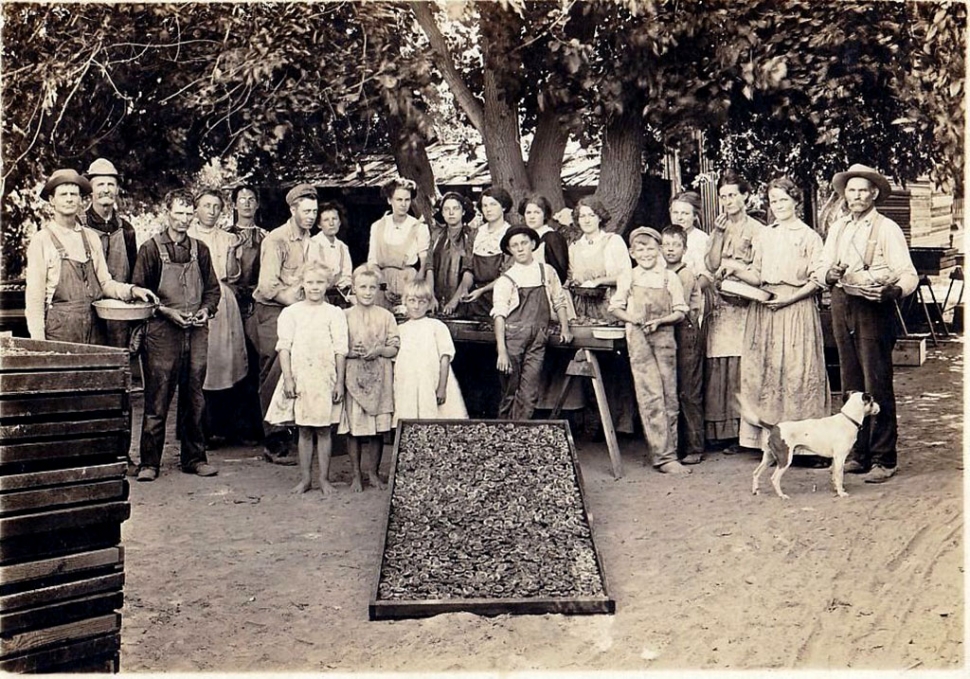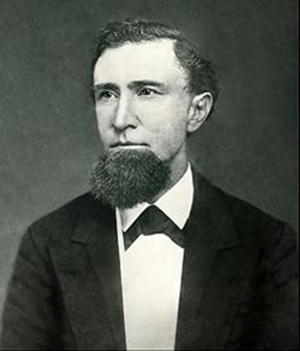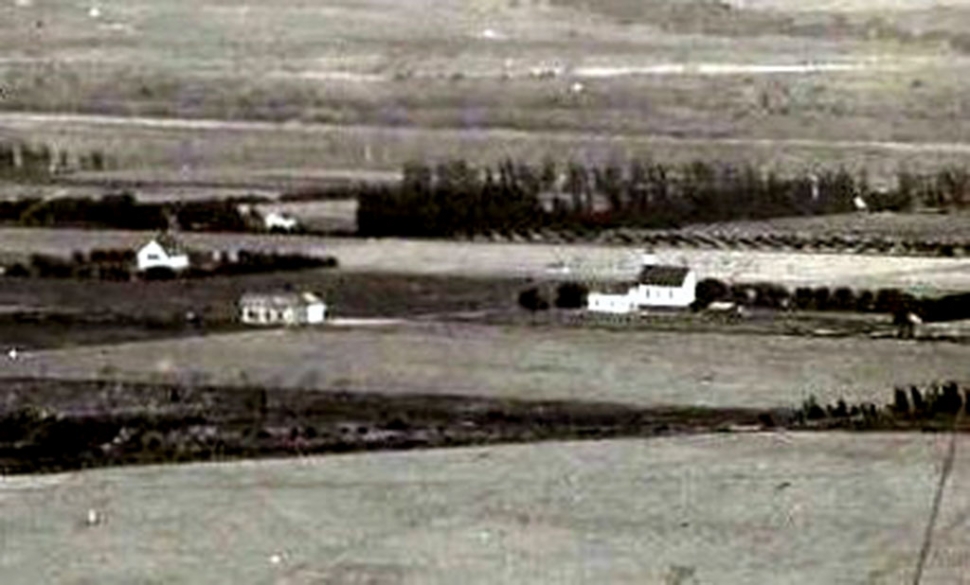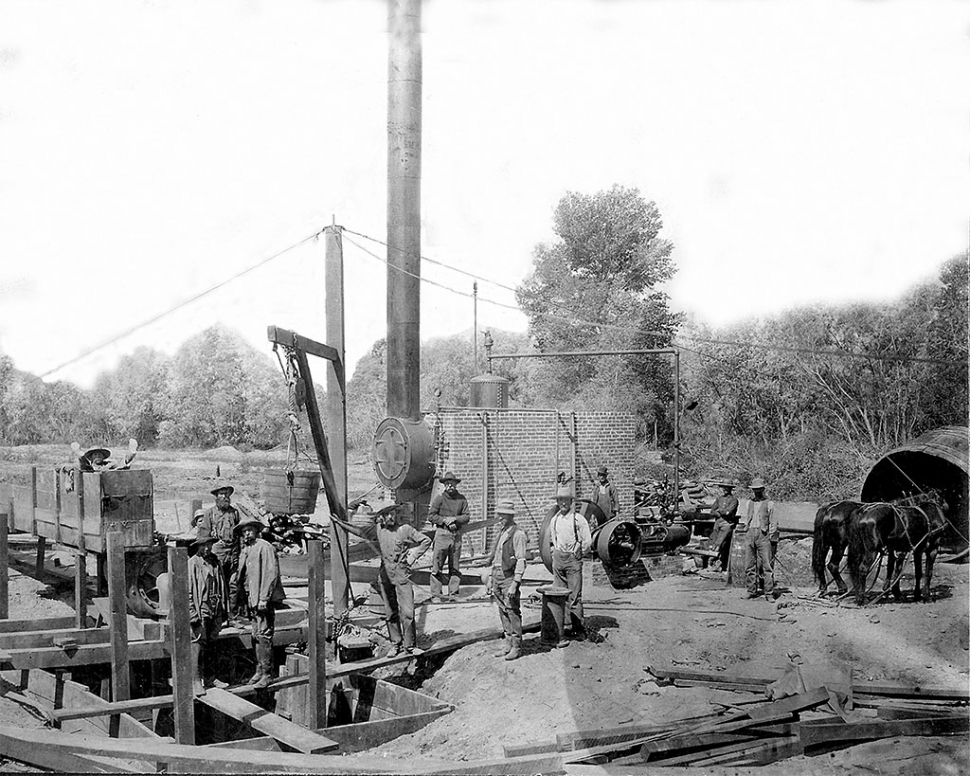|
Fillmore Historical Museum Shares the Story of Bardsdale
 Apricot drying at E.B. Turner Ranch, Sespe. Photos courtesy Fillmore Historical Museum. By Anonymous — Wednesday, July 29th, 2020
 Royce G. Surdam, father of Bardsdale, who came to Ventura County in 1866 from New York, and became one of the county’s first realtors.  View of Bardsdale with the German Evangelical places for the people. Church in the distance.  Men drilling the first water well on the Stringtown Ditch at Shiells Canyon. Courtesy Fillmore Historical Museum Bardsdale From Ventura County Historical Society Quarterly, Vol 1. February, 1956 R. G. Surdam, father of Bardsdale, was born in Dutchess County, New York, on August 11, 1835, according to early histories of Ventura County. We are especially interested in him because he was the County's first realtor. He came to California in 1854, and to Ventura County in 1866. His first real estate venture was not at Bardsdale but at Ojai, where he purchased 1700 acres from Thomas R. Bard and laid the beginnings of the Town of Nordhoff, whose name was later changed to Ojai. Later, in 1887, he bought from Thomas R. Bard about 1500 acres, land purchased by Bard from the More family. Surdam advertised this tract on a grand scale for those days, one of his advertisements appearing in a recent brochure published by Title Insurance and trust Company and generously distributed by that corporation. The booklet was entitled "The Story of Ventura County." In some of the literature put out by Surdam he made extravagant claims for the land, and Bard, feeling that his name had been used without authorization, made public -contradiction of some of the statements and offered to buy back at cost any parcels which the purchaser felt had been misrepresented. In Southern California water is ever more important than the land on which it is to be used, so concurrently with the Subdivision there was organized Southside Improvement Company, a California corporation, whose Articles were filed on February 28, 1887. It was organized for the purpose of furnishing domestic and irrigating water to the new community. To each l0-acre parcel of land was assigned 20 shares of stock in the corporation. The first directors were Thomas R. Bard, Cephas L. Bard, R. G. Surdam, E. O. Gerberding and F. W. Gerberding, the two latter being brothers-in-Jaw of Thomas R. Bard. The eastern boundary of the Bardsdale Tract was the present Chambersburg Road, which is a part of the highway from Fillmore to Moorpark. As near as I can check from the records in the office of the County Recorder the first deed from Surdam conveying land in the Tract was issued to Bernhard Broderson, the second of America Philbrook and the third to Henry Klages. The map of the Tract was recorded in Book 2, page 139 of Miscellaneous Records in the office of the County Recorder of Ventura County. The map says the tract 1297.67 acres. Through the courtesy of Clarence R, Young, secretary of the Southside Improvement Company now and for many years past, I have had access to the old minutes of Southside. From an economic side they give almost a full history of the growth of the community. For about the first twenty years of the life of Southside the place of business of the water company was at Hueneme. I became a bookkeeper and teller in Bank of Hueneme in 1895, where the Southside kept their funds. I can still remember seeing James Walker, Sr., Geo. N. King, J. R. McKee, Geo. A. Wengert, Diedrich Bartels and others of their stockholders in Hueneme on their meeting days. All of these men were part of the backbone of Bardsdale. J. S McKee was for years the agent of Bard in the sale of lands. Later Geo. N. King served in the same capacity. While working for Bank of Hueneme I had an opportunity to see the generous attitude of Mr. Bard toward all of these Bardsdale settlers. He was president of the Bank, Maj. Thos. J. Gregg the cashier. I recall hearing Maj. Gregg say to Mr. Bard one day that we had too much money on hand and the demand for loans was slow. Mr. Bard said, "I have quite a number of mortgages on Bardsdale property and would be willing to let you have some of them. However, it must be with the understanding that if you need your money at any time you must not annoy or bother the mortgagors. Just charge the paper back to my account." Many of the early settlers in Bardsdale told me after I came to Fillmore that if it had not been for the liberal attitude of Mr. Bard they would have had to lose their lands. At a very early date there was organized in Bardsdale a German Evangelical Church. According to Mrs. Willis Burson (born Kate Baldeschwieler) the Sunday morning service was, in German and the evening service in English. I think Mrs. Burson is the only living attendant of these services, but the descendants of the early day members are among the best known and most respected members of the community. You run across the names Haase, Hassheider. Michel, In 1948 they celebrated the 50th anniversary of the founding of the latter. Mrs. Willis Burson wrote a History of the Bardsdale Church in which she said: "As nearly as can be ascertained services were first conducted in Bardsdale German Evangelical Church under the auspices of the Methodist Church by Rev. George Alexander some time in 1892." The Methodist Church was organize-d in 1898. Her history abounds with the sacrifices made by the community to start and then to maintain their Church. Bardsdale has always been la strongly religious community and the Church has been a rallying point for many community efforts. Mrs. Burson states in her history that the lots for the Church building were given by Thomas R. Bard, and that he made other substantial donations also. I suppose that one writing the story of Bardsdale should preface it with a reference to an earlier settlement, Stringtown, so called because it was a settlement in which the homes were along what was called Stringtown Ditch, one of the early day water rights in the County. The Stringtown Ditch had its beginning about two miles east of Chambersburg Road and ran as far west as that road. S. A. Guiberson and wife settled east of that and raised large family on lands now owned by the Shiells family. Their home dates from 1860. Along the Stringtown Ditch lived the Morrison, the Horntons, the Baums, the Curlees, the Asbills and many others. Mrs. Hattie V. (Busick) King tells me that she came to live with her Aunt, Mrs. Guiberson, in 1884 the year of the big flood, when most of Stringtown settlers had their homes washed away by the Santa Clara. Mrs. King states that there were many children in that territory and that all of them went to school across the River, in Cienega schoolhouse. Later a school district was formed a Willow Grove, and still later one at Bardsdale. I mention so fully these items about schools and churches because in every new development in our Country they have been gathering places for the people. When I first came to Fillmore in 1907, Bardsdale was largely given over to the raising of apricots. Each year about July first saw an influx of pitters with their tent and numerous children, coming from Los Angeles for the only vacation they were apt to have. As time went on the land became too valuable for the growing of ‘cots and the day of the orange and lemons arrived. Now one of the most beautiful sights in the County is the citrus groves in Bardsdale. Originally all water furnished by Southside arrived by gravity: now it is all pumped from wells along the river. Bardsdale being Surdam’s greatest contribution to the County, it seems fitting that when he died he was laid to rest in the beautiful Bardsdale Cemetery, which looks out over the ranches he was instrumental in starting. |
